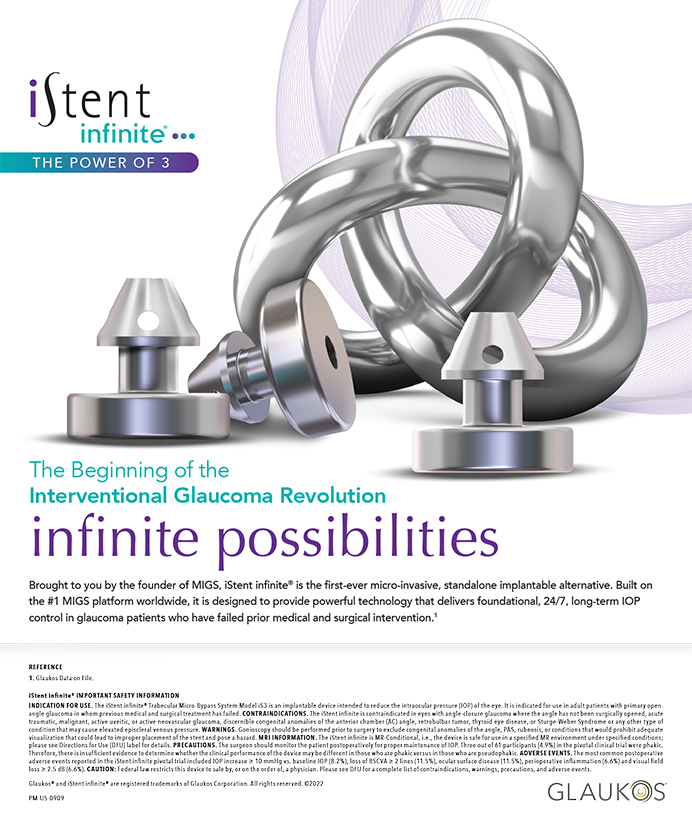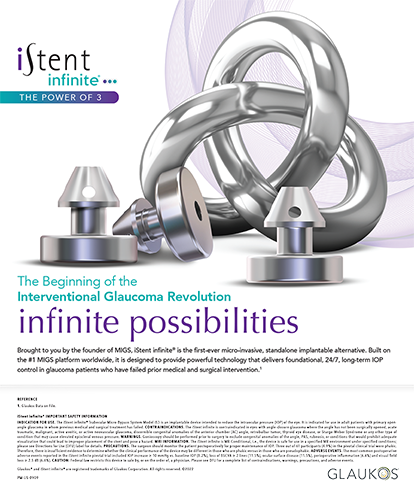As surgeons, we can tell patients that aspheric IOLs offer a quality of vision that is superior to that provided by standard monofocal IOLs. Furthermore, aspheric implants perform better in difficult visual situations, such as night driving.1,2 IOLs with a negative spherical aberration (such as the Tecnis IOL [Advanced Medical Optics, Inc., Santa Ana, CA]) are designed to counteract the mean amount of positive anterior corneal spherical aberration found in the general population of patients with cataracts. By reducing ocular spherical aberration, these IOLs have been shown to improve patients' functional vision and their visual performance in simulated night driving conditions.3
SOCIOECONOMIC NOTE
At least two IOLs with negative asphericity have been granted New-Technology IOL status,4 which increased the amount of reimbursement to ASCs by $50 per lens. Assuming 2.5 million cataract procedures are performed per year and a 50 market penetration, the annual cost of this surgery to the US government (taxpayers) and other third-party payers is roughly $62 million. In the long run, however, IOLs with negative asphericity will likely save patients and the government money—and lives. According to a study by the Potomac Institute for Policy Studies, located in Arlington, Virginia, the enhanced vision of patients who receive aspheric IOLs will result in a decrease in the rate of automobile accidents.2
IMPROVED DRIVING RESPONSE TIMES
In the study by the Potomac group of braking response time, 60 eyes of 30 patients underwent cataract surgery and were randomly assigned to receive either the Tecnis lens or a standard IOL. The investigators measured subjects' visual acuity, spherical aberration, and contrast sensitivity. Across all ages and pupillary sizes, the average amount of spherical aberration was significantly lower in the eyes that received the Tecnis IOL.
Ninety days after surgery, the investigators tested the patients' ability to drive at night at a modern driving simulation facility. The lighting was adjusted to approximate the conditions of rural or city driving. The former involved a straight, level road and a constant vehicular speed of 55 miles per hour. The road for city driving was similar, but the simulation included lights, cars, and storefront illumination in the forward view. The experiment tested patients' ability to detect and recognize highway signs and adult pedestrians. Patients signaled their identification of objects and people by pressing a button.
The investigators reported that patients who received the Tecnis IOL identified pedestrians, roadways' hash lines, and other objects more quickly than those who received a standard monofocal lens. The Tecnis group had an average 45-foot advantage in terms of braking/stopping sooner, which translated as a 0.5-second improvement in response time. Of interest, the superior braking reaction in the Tecnis group exceeded the benefits of other technological advances in automotive safety and lighting (eg, rear center, high-mounted brake lights).
How does improved reaction time increase driving safety? Using three different methodologies, the Potomac Institute study estimated that aspheric IOLs would result in a 10 reduction in accidents among those who received this lens. The anticipated savings could exceed $1 billion per year, with a prevention of more than 70,000 personal injuries annually.
IN SUMMARY
To my knowledge, the driving simulation and theoretical studies from the Potomac Institute are the best indicators that, by enhancing quality of vision, aspheric IOLs can have a major impact in improving driver safety. Greater safety on the roads will cost society less in terms of automobile accidents (not to mention the prevention of death or injury), despite the initial cost of the IOL.
Section Editor Eric D. Donnenfeld, MD, is a trustee of Dartmouth Medical School in Hanover, New Hampshire, and is Partner in Ophthalmic Consultants of Long Island in Rockville Centre, New York. Dr. Donnenfeld may be reached at (516) 766-2519; eddoph@aol.com.
Douglas D. Koch, MD, is Professor and the Allen, Mosbacher, and Law Chair in Ophthalmology at the Cullen Eye Institute, Baylor College of Medicine, Houston. He is a paid consultant to Advanced Medical Optics, Inc. Dr. Koch may be reached at (713) 798-6443; dkoch@bcm.tmc.edu.


